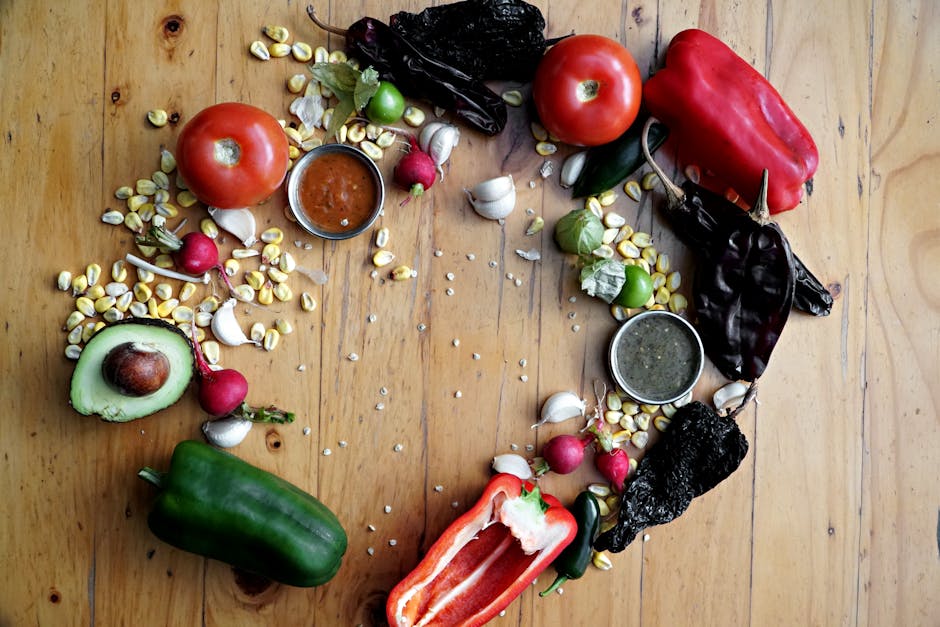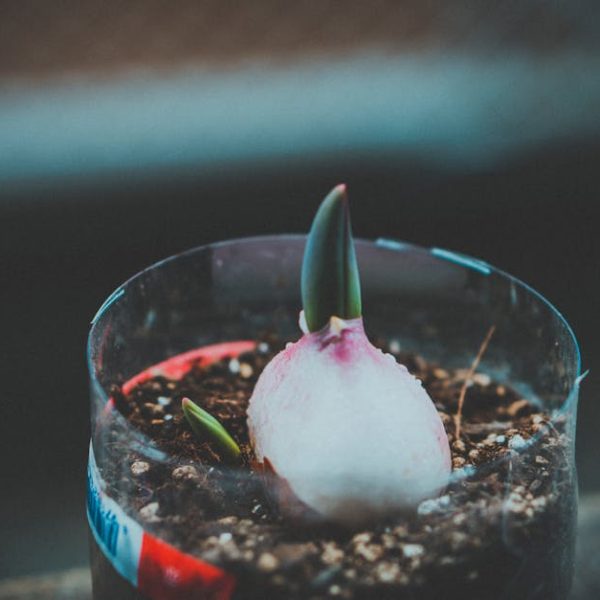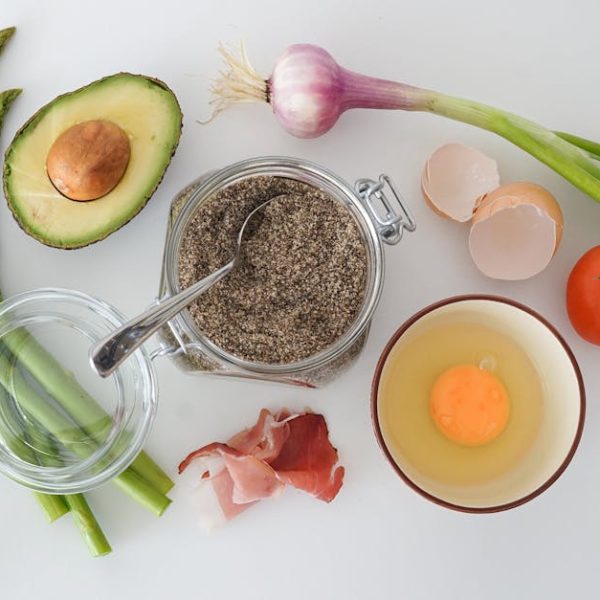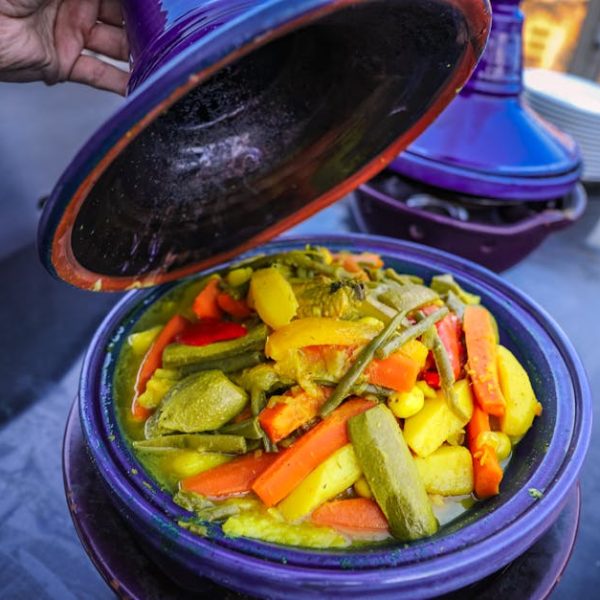At first glance, you might mistake a tomatillo for a green tomato in a delicate husk, but upon closer inspection, you’ll quickly realize they are quite dissimilar. The major difference lies in their classification: although both are considered berry-type fruits, tomatillos belong to the physalis genus, and tomatoes belong to the solanum genus. This is just the tip of the proverbial biological iceberg, however, as there are several key aspects that differentiate tomatillos from tomatoes.
Physical and Genetic Differences
Physically, tomatillos and tomatoes may seem similar due to their rounded shape and shared role as staple ingredients in many types of cuisine. Yet, their differences are pronounced once you delve beneath their surfaces. Tomatillos, primarily green or yellow, are smaller and denser than tomatoes and are enveloped in a thin, paper-like husk. Conversely, tomatoes, varying from fire-engine red to deep purple, lack a husk and come in an array of sizes, from bite-sized cherry tomatoes to hefty beefsteaks.
Their genetic makeup further underscores this divergence. A tomatillo’s hardy nature derives from its genetic structure, which imparts a tangy flavor and firm texture that holds up exceptionally well under lengthy cooking times. Tomatoes, however, are juicy and soft, with a sweet or acidic taste depending on the variety—a direct result of their distinct genetic blueprint.
Culinary Uses of Tomatillos and Tomatoes
When it comes to versatility in the kitchen, both tomatillos and tomatoes shine. Tomatillos are the star ingredient in traditional Mexican salsa verde, endowing the sauce with a tartness that is refreshing and tangy. Conversely, their cousins, the tomatoes, reign supreme in a classic marinara sauce, infusing it with a sweetness that is mouthwateringly rich and satisfying.
Popular dishes featuring tomatillos and tomatoes:
- Tomatillo: Salsa Verde, Chicken Enchiladas, Chiles Rellenos.
- Tomato: Marinara Sauce, Fresh Gazpacho, Bruschetta.
Pro Tip: To enhance the flavor of tomatillos, roast them before incorporating into your dish. For tomatoes, slow-roasting can deepen their natural sweetness.
Nutritional Profiles of Tomatillos and Tomatoes
Nutritional content may not be the first thing you consider when comparing tomatillos vs. tomatoes, but it’s certainly noteworthy. Tomatillos are lower in calories and rich in dietary fiber and vitamin C, making them an excellent option for those conscious of their caloric intake. Conversely, tomatoes offer a multitude of health benefits, packed with vitamin C, potassium, and the antioxidant lycopene, which has been linked to reducing the risk of heart disease.
When considering your dietary needs, both tomatoes and tomatillos offer important vitamins and minerals that support overall health. However, their different nutritional profiles may complement certain dietary preferences and health goals.
Growing Conditions for Tomatillos and Tomatoes
If you have a green thumb or are keen on trying your hand at home gardening, knowing the ideal growing conditions for tomatillos and tomatoes is crucial. Despite their genetic differences, both share many similar requirements for successful growth, such as plenty of sunlight, well-draining soil, and regular watering.
Key factors for cultivating tomatillos and tomatoes:
- Sunlight: Full sun is optimal.
- Soil: Requires well-drained, nutrient-rich soil.
- Water: Regular, consistent watering is crucial.
- Temperature: Thrives in a warm, summer-like climates.
Pro Tip: Provide a sturdy stake or trellis structure for your tomato plants as they grow – this aids in their upward growth and helps to produce a higher yield. For tomatillos, plant two or more together for proper pollination and fruit development.
Buying and Storing Guide: Tomatillos vs. Tomatoes
Taking the time to choose high-quality fresh produce will greatly enhance your culinary creations. When selecting tomatillos, look for a firm texture and a husk that closely fits the fruit – this indicates freshness. On the other hand, ripe tomatoes convey a vivid, uniform color without wrinkles, soft spots, or open cracks.
Checklist for purchasing tomatillos and tomatoes:
- Tomatillos: husk should be dry and closely fitting; the fruit should feel firm.
- Tomatoes: uniform color, shiny skin, and feels heavy for its size.
Pro Tip: Store tomatillos in a paper bag in the refrigerator, and they’ll last for two weeks or more. Freshly bought tomatoes, however, are best stored at room temperature away from direct sunlight until ripe.
Navigating the key differences between tomatillos and tomatoes can help you get the most out of these vibrant fruits. Understanding their unique attributes enables you to select the right fruit for your culinary needs, and adopting the best practices for their usage, storage, and cultivation can enhance your cooking and gardening experiences.
Remember, whether you’re whipping up a tangy salsa verde or a rich marinara, the delicious possibilities for tomatillos and tomatoes in the kitchen are virtually endless. So why not explore the distinctive qualities of these two fruits further?
Conclusion
Tomatillos and tomatoes, despite their apparent similarities, offer unique flavors, nutritional benefits, and culinary uses. By understanding their key differences and applying these insights, you can enhance your culinary endeavors, gardening pursuits, and wellness goals. So whether it’s in the kitchen, garden, or beyond, here’s to celebrating the unique, diverse world of fruits, one delicious discovery at a time!
Key Takeaway:
- Tomatillos and tomatoes, while similar in appearance, have significant differences in physical characteristics, genetic structures, nutritional profiles, culinary uses, and growth conditions.
- Tomatillos, primarily green or yellow, are smaller, denser and covered in a thin, paper-like husk. They hold up well under lengthy cooking times and are star ingredients in traditional Mexican dishes.
- Tomatoes, varying in color, are juicy and soft, and their sweet or acidic taste is a result of their distinct genetic blueprint. They are used in a wide array of dishes worldwide.
- Nutritionally, tomatillos are lower in calories and rich in dietary fiber and vitamin C, while tomatoes are packed with vitamin C, potassium, and the antioxidant lycopene.
- Both tomatillos and tomatoes require plenty of sunlight, well-draining soil, and regular watering to thrive.
- The proper selection, storage, and handling of these two fruits significantly affect their taste and longevity.
No matter which fruit you prefer, let it be your comfort that each offers an array of health benefits and a unique flavor profile that can enhance any dish. Enjoy exploring the distinctive qualities of tomatillos and tomatoes further, and may your culinary endeavors bring you joy and wellness.
FAQs
Q: Can I use tomatillos as a substitute for tomatoes in recipes?
A: It depends on the recipe. While tomatillos and tomatoes can sometimes be used interchangeably, it’s important to note that they have different flavor profiles. It’s best to experiment and see which one best suits your taste preferences.
Q: Are tomatillos and tomatoes suitable for all diets?
A: Generally, yes. Both tomatillos and tomatoes are low in calories and rich in vital nutrients, making them suitable for most dietary needs. However, as with any ingredient, some people might be allergic or sensitive to them.
Q: Can I grow tomatillos and tomatoes indoors?
A: Yes, both tomatillos and tomatoes can be grown indoors provided they have enough light and the right kind of soil. They also need a lot of space to grow, as both plants can get quite large.
Q: How can I tell if my tomatillos or tomatoes are ripe and ready to eat?
A: Ripe tomatillos feel firm and their husks fit closely to the fruit. They are typically harvested when the fruit fills the husk. Ripe tomatoes have a uniform color, shiny skin, and feel heavy for their size.
Q: How can I prolong the shelf life of tomatillos and tomatoes?
A: Tomatillos last longer when stored in a paper bag in the refrigerator, typically for two weeks or more. Freshly bought tomatoes are best stored at room temperature away from direct sunshine until ripe.
We hope you enjoyed this article. Feel free to share it and explore more posts on our website!






